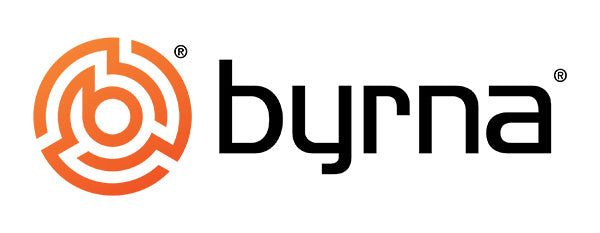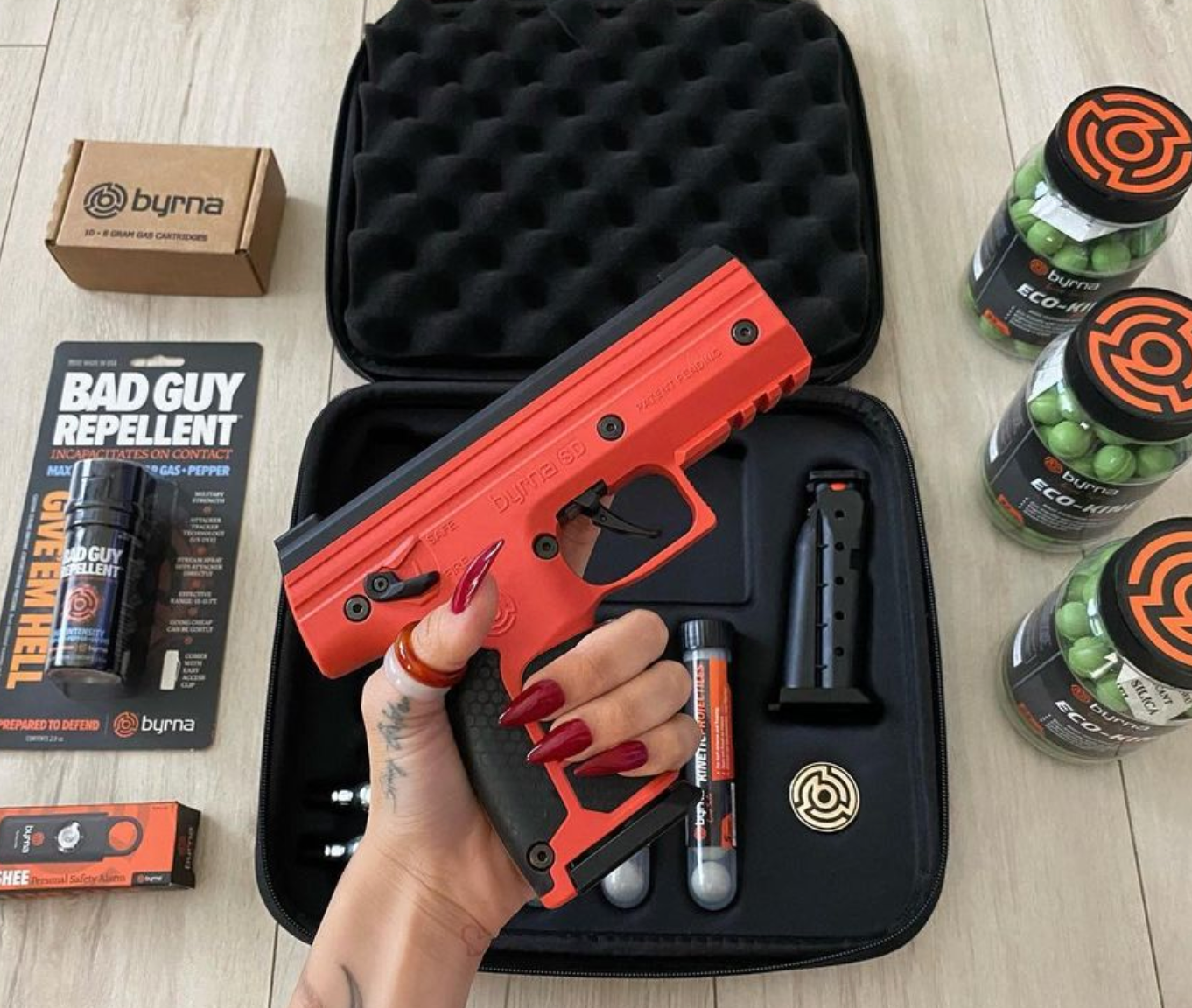
Feeling safe and confident is something that we all care about - right? Self-defense tools can play a big part in helping you get that sense of security and improving your ability to defend yourself against an attacker.
Self-defense sticks are popular because they are portable and easy to handle. They come in a bunch of different shapes and varieties. You'll also see that they are known for being easy to carry, but the different models and the laws can be confusing sometimes. Carrying or concealing them, to give you an example, is illegal in Canada.
In this post, we'll break down everything you need to know about self-defense sticks and their use in Canada. We'll talk about what they are and explain why people choose them. Also, how they work, the rules, alternatives and quite a bit more.
Ready? Let's do this!
Table of Contents
What Are Self-Defense Sticks?
Self-defense sticks are designed for your protection and usually come in a few different styles.
You're probably already familiar with one of the most popular types, the expandable batons or short sticks (sometimes called "conversation" in Japanese and Okinawan martial arts) and improvised sticks like a rolled-up magazine. These sticks help you defend yourself by creating distance and also scaring off attackers.
So, what are self-defense sticks usually made of? Usually, these sticks are made from strong parts like metal alloys, dense hardwoods, and tough plastics. As an example, expandable batons are usually made from steel, and they can extend with a flick of the wrist. That gives you both portability and strength. Short sticks and older versions might be made from hardwoods like oak and hickory. Improvised sticks could techniically be made from anything sturdy; people have even used walking sticks or umbrellas.

How exactly do you use them in a self-defense situation? Techniques with self-defense sticks include thrusting, swinging, and both hands for added power. These tools are meant to neutralize threats by causing pain or disarming an attacker. Think about this: thrusting the stick toward an attacker's midsection can create enough distance for you also to escape. You can also deliver a strong blow. Swinging motions can target limbs and the head to stop the threat. The stick with both hands can let you deliver forceful pushes or lock joints to stop an opponent. Just think about the effectiveness!
These tools can be super helpful - especially in defending against knife attacks or other blunt weapons. The stick's length and sturdiness give you both offense and defense, enabling you to block and counter attacks. The big benefit here is the ability to keep a safer distance from the attacker. That lessens the chance of you getting hurt in close contact. You'll be happy to have that space.
It's also a good idea to think about the rules surrounding self-defense sticks. Expandable batons might be less regulated than other self-defense tools! But this depends on local laws. Always make it a point to check the legal guidelines in your area to make sure you're following the rules. It's better to be safe than sorry.
Training is part of owning a self-defense stick, too. Practicing techniques like thrusting, clinching, and swinging can be the difference between successful self-defense and ineffective tries. Regular training improves your skills and helps you respond quickly and confidently during a real threat. You want to know how to use it the right way so it's not taken away from you by your attacker.
Why Use Self-Defense Sticks?
Why use self-defense sticks? One large benefit is portability! Bigger options like baseball bats are clumsy and not very portable, but self-defense sticks are easy to carry.
Think about a small and expandable baton fitting well into your bag or resting by your side. It's ready for action without drawing any attention. Sounds pretty great right?

But unfortunately we have to talk about the legal side. A lot of places have strict laws about knives and guns. Just to give you an example, while self-defense sticks can be seen as weapons in the U.K., they usually have less restrictions than items like pepper spray and knives. We'll talk about legal matters more in a bit.
So, why do these self-defense sticks work well in real defense situations? First, they help with the power of your punches and strikes, and they work as an extension of your limbs. That means your strength gets a bit more defensive power. Even if you are not very strong, a self-defense stick can still increase your effectiveness quite a bit.
You should think about how easy it's to use them too - that's another strong point. Short sticks are tools that even a beginner can handle. Think about makeshift versions like a rolled-up magazine; almost anyone can grab one and use it. Are you wondering what moves might be most helpful with a self-defense stick? Thrusting techniques work well. You can at places like the face, eyes, solar plexus, and groin can quickly stop an attacker and give you a chance to escape.
Also, holding the stick with two hands improves your power and balance quite a bit - that technique lets you create more force and have better control. It's a good defense option in tough situations. So, just how helpful are these tools in real-life scenarios?
Take expandable batons - they're small and easy to carry. Batons are helpful against knife attacks, and they let you keep a safer distance from the threat while handling the attacker.
While self-defense sticks give you a lot of benefits, you should stay aware of the legal repercussions.Stay tuned for the Canadian laws that we're about to talk about!
How Do Self-Defense Sticks Work?
The first lesson you should know is how to hold and move the stick for maximum effect. So, what easy techniques and close strikes should you know?
For self-defense, you should aim for the fleshy parts of the thighs and arms to cause pain. Use strong swings, but stay away from hitting the face or head except when needed. Striking bones like the knee, shin, elbow, or hands can also be helpful in situations where pain alone isn't enough to stop an attacker.
Remember, it's for less-lethal purposes only - it should never be used to cause permanent injury or maim someone.
In extreme situations where life-saving force might be needed against a persistent attacker, strike hard and fast toward the head. But you should only do this last resort when no other options are available.

Short sticks, sometimes called talking sticks, are helpful too! You might ask why short sticks are good. Well, they are helpful for thrusting attacks directed at the face, eyes, solar plexus, or groin. Thrusting is usually the most helpful move with a short stick. Use your whole body when striking. Practice moving into the attack instead of backing away.
When it comes to training, you should practice different moves like thrusting and swinging. Take a look at your targets. Defending against a stick attack means staying outside the danger zone or clinching with the attacker. Use good timing and full commitment to cross into the danger zone and neutralize the threat.
Are Self-Defense Sticks Legal?
When it comes to self-defense sticks in Canada, you have to understand the legal rules around owning, buying, and carrying these items.
Owning a baton or a similar stick at home might be technically legal in Canada, but that comes with a big "if." You can only have it if you don't use it to threaten or hurt someone. But you might not be able to use it in a self-defense situation, either. Canadian law is a little murky when it comes to this, and the police may choose to charge you if you use it in a self-defense situation. It's kind of a grey area, so it's not a very good option.
Don't you find it interesting that Canadian law also bans types of batons? Things like extendable and spring-loaded ones are a serious offense. That limits your options.

So, let's talk about buying these self-defense sticks. Can you just walk into a store and grab one off the shelf?
The answer is mostly no. Retailers usually can't sell batons to people like you and me - there are only exceptions for police or qualified personnel. If you try to buy or sell them, you can get into serious trouble. Why, though? This rule exists to stay away from people from misusing these items - to make sure they don't land in the wrong hands.
Now, here's the thing: carrying a baton for self-defense in Canada is illegal.
The Criminal Code of Canada makes it very clear. If a weapon is meant for violent confrontations, like batons, you can't have it. Even if you don't plan to use it and you're caught with one in public, you can still face criminal charges.
It's pretty serious, so don't get caught with one. So what's a law-abiding person like you supposed for?
Let's talk about that next.
Alternatives that are Legal in Canada
These tools are less-lethal ways to stop and defend yourself against attackers! Places like Canada have strict regulations about carrying weapons for self-defense.
So - what legal alternatives can you use in Canada?
Carry dog spray - a good option that stays within legal limits. While it's made mostly for use against animals, carrying it can give you an extra bit of personal safety. You might also like personal alarms because they make a loud noise that gets attention and maybe scares off an attacker.
For those living in Canada, there are a bunch of legal alternatives like dog spray, personal alarms, and less-lethal CO2 guns.
Did you know Byrna Canada has legal self-defense options that are less-lethal yet still give you great protection? Among the main products available from Byrna.ca are Byrna Launchers. That come in types like pistols and rifles. These are less-lethal and shoot 68-caliber kinetic and/or chemical irritant projectiles.

With an effective range of up to 100 feet, they also are powered by compressed air (CO2). They are also compliant with the Canadian Criminal Code since Byrna launchers don't need licensing. The firing speed is below 500 ft/sec (150 meters/sec). That makes it compliant.
Choose wisely. Your safety matters!
Training and Practice Tips
So, you should be thinking about what we've talked about - regardless of which tool you use, you need to get the right training and practice with your self-defense tool, if it's self-defense sticks or something like the Canada-legal less-lethal CO2 guns that we sell here at Byrna. Your self-defense tools won't be helpful if you don't know how to use them, so get out there and train!
When it comes to self-defense sticks, it takes some practice and experience. You might want to sign up for a self-defense class - or, if it's more your style, start watching complete tutorials that show techniques in a clear and step-by-step way. These kinds of resources can help with your confidence and readiness. How do you think a self-defense stick could fit into your personal safety plan?
Consistency and good technique make a difference, too. Practice can turn the self-defense stick from an object into an extension of your body. As you'd probably guess, this makes your moves much more instinctive and confident. Think about the peace of mind you'll have, knowing you're ready. There are lots of real-life stories about people who have protected themselves with these tools, and they all point out the value of nonstop practice. It's inspiring to see how training can make people feel stronger and more sure of themselves.

On that note, when it's time to choose reliable self-defense services, you should think about Byrna Canada. We give Canadian residents a bunch of great less-lethal options that give you a sense of security without needing lethal force. Their products include CO2 less-lethal pistols and rifles, along with CO2 cartridges and personal sirens. What's nice is the easy access since no background checks are needed. Besides, these are completely legal in all ten provinces and can be shipped right to your door without any background check or permit.
Byrna Canada also has free shipping on all launcher orders! That makes it even easier to get going on your self-defense process.
So, why not take a bit to check out the large number of self-defense products at Byrna.ca? If you're looking for something to carry with you or tools to have at home, there's probably something that fits your needs well. Your safety and peace of mind are worth the investment.




